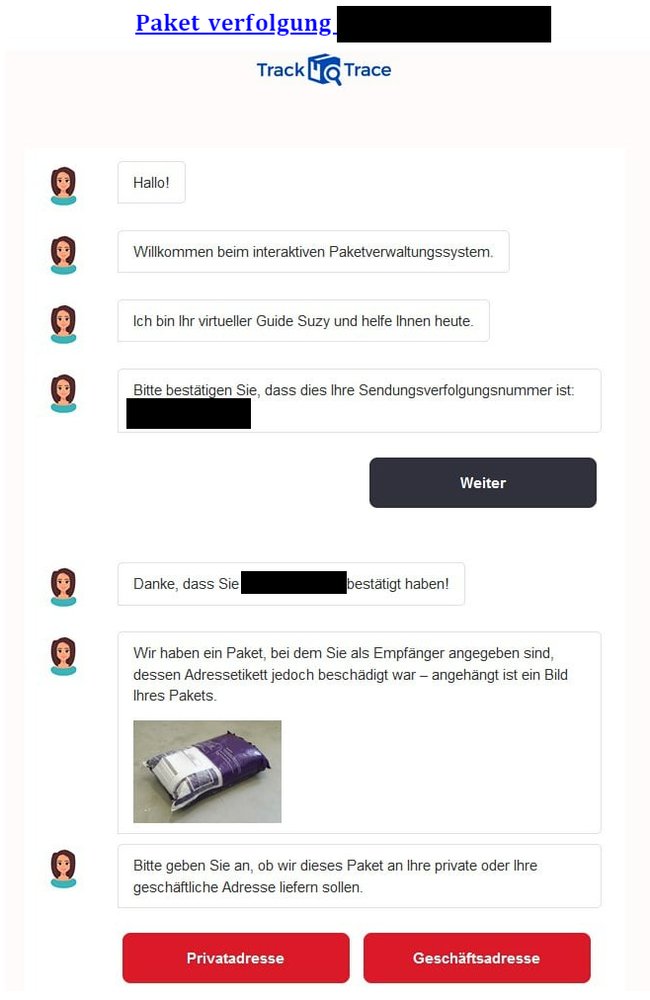The criminal energy of scammers knows no bounds. Consumer advocates are now warning of a new scam that is specifically targeting DHL customers. With a particularly nasty trick they are fooled into thinking they are serious.
More and more companies are using chatbots in their customer communication. The interactive computer programs save money and can often answer at least simple questions quickly and reliably. It is precisely this chatbot trend that fraudsters are now taking advantage of.
Fraudsters want to use DHL chatbot to get sensitive customer data
The NRW consumer advice center is currently warning of this in a statement (source: NRW consumer advice center). According to this, scammers are currently trying to target DHL customers with a phishing email. there a language assistant named Suzy informs about problems with the delivery of a package. Allegedly, according to the scam in the fraudulent email, the address label on a package was damaged. The supposed recipients should now enter their address via a linkso that the package can still be sent.

The fact that the scammers use a chatbot to trap their victims is particularly clever – after all, companies are increasingly using this type of computer program. Thus seriousness is feigned. The English-language name “Track and Trace DHL” does the rest here. One perfidious scam to get sensitive customer data. The consumer center NRW therefore has some advice for recipients of such mails: “It’s best to move this and similar emails to the spam folder unanswered.”
We explain exactly what is behind phishing here:
GIGA phishing warning list provides information about current scams
If you want to be regularly informed about current scams, you should also save our GIGA phishing warning list as a bookmark in your browser. Here we provide information about the latest phishing attempts in a constantly updated list.
